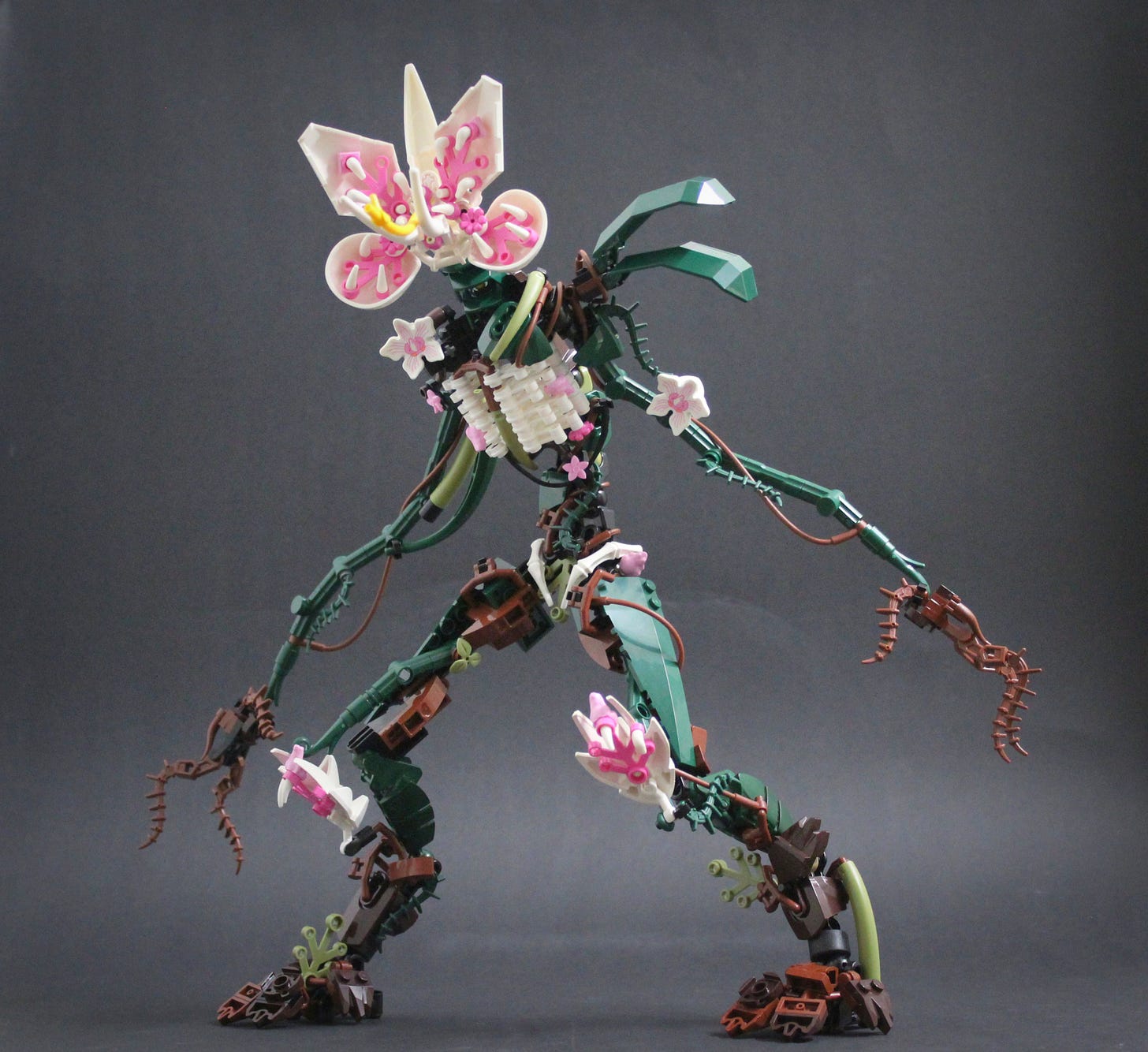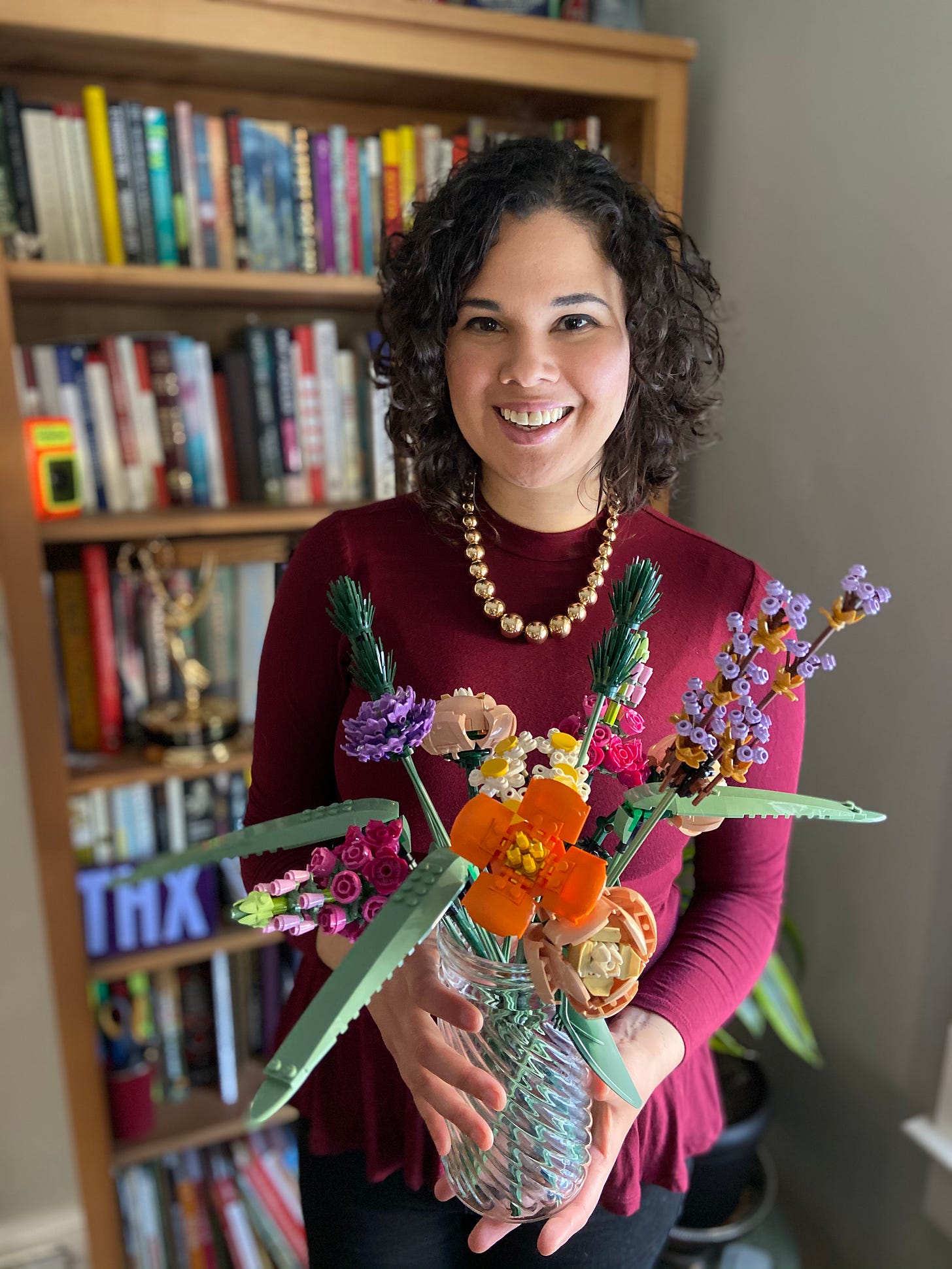I was about 30 years late to the Lego game. Growing up, I was more of a Kynex kid, but even then I didn’t play with them often. I couldn’t get into the step-by-step process that these building sets require.
Call it ambition or call it impatience, but I was (and sometimes still am) the kind of person who sees the end result and wants to get there as quickly as possible. I see where I want to be and I rush toward it.
For better, it means I come up with creative and clever ways to streamline processes. For worse, it means I can miss a foundational step in a necessary process. And for even worse, running headstrong toward my goals often leads me to burnout by the time I get there.
When the inevitable burnout hit, puzzles helped me sort out my frazzled mind. Piece by piece, puzzles gave me easy problem-solving tasks while also giving me a sense of progress. And in the end, I was rewarded with a sense of completion. I’ve come to learn, Lego operates the same way.
When I married Jon I married into a vast Lego collection, some of which we’ve incorporated into the decor of our home. On the top shelf of our entertainment center in the living room is a row of Lego Star Wars helmets. In his office, there’s a shelf dedicated to the interactive Super Mario course with the 12.5 inch Mighty Bowser as the centerpiece. On his dresser stands an army of minifigures including several Batmans, all of the Simpson’s characters and a bunch of Qui-Gon Jinn’s. And sitting on our dining room table is a beautiful bouquet of Lego flowers.
(In Let Qui-Gon’s Be Qui-Gon’s, Jon explains the impact that Stars Wars Episode 1 and Qui-Gon Jinn had on Lego.)
That’s where my Lego journey started - the Lego flower bouquet. It was Valentine’s Day 2021. We were approaching a year of isolation and the pandemic had left us both in a wild funk that I’m sure many can understand. So to ease the burnout, Jon and I decided to build the Lego flower bouquet together, dividing and conquering the roses, daisies and snapdragons.
Putting the Lego flowers together gave me the same satisfaction that puzzles gave me. The instant dopamine rush when I found the right pieces and the gratification when they snapped together motivated me to keep going.
As I worked my way through the IKEA-esque instructions, I developed an appreciation for the work that goes into a Lego build. There are over 3,700 unique Lego Elements that Lego designers use to conceptualize 3D models of virtually infinite things. And they get clever with how these elements can be used. Lego car hoods turn into beautiful rose petals, while pterodactyl wings are reimagined as leaves.
In the Lego orchid set, they reuse the Demogorgan minifigure head from the Stranger Things sets to make intricate flowers. Extreme Lego fans sometimes go as to create their own builds from sets, like the Demogorchid.

When I held my successfully completed bouquet of Lego beauties, it dawned on me: beautiful things are built one step at a time. Every brick in the foundations of our education, our careers, our goals, and even our relationships deserves equal amounts of attention.
And as we say here in Philly, trust the process.
Next time author, stay-at-home dad, and writer/podcaster behind Better Strangers on Substack and TikTok, Matt Hershberger, talks about how to stay creative when you’re balancing freelancing with raising children.
If you want to share your Side Quests as a Side Quester of the Month, reach out!
Until then, what process projects help you feel progress? Share your thoughts in the comments!
References in this newsletter:
Lego Sets
Videos
Articles
Understanding Lego: Bricks: Brick Architect
In-house design teams: how are LEGO sets designed?: Design Week
Blogs
Giving the LEGO Stranger Things Demogorgon minifigure a floral makeover: Brick Fanatics
The Demogorchid by Jayfa: Flickr



